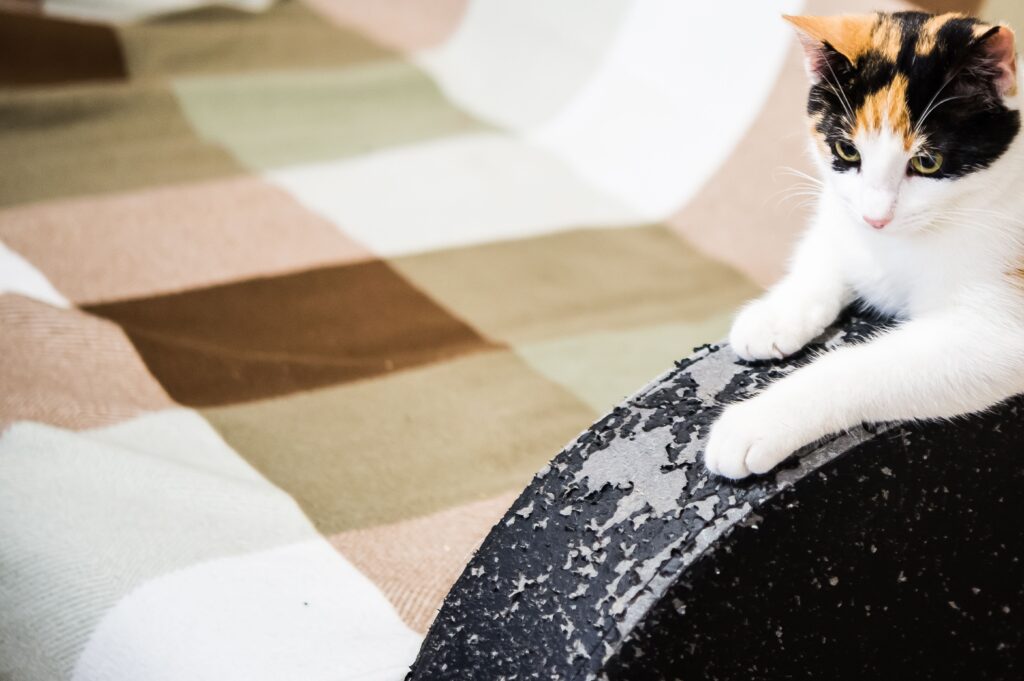Where Should I Position Scratching Pads to Protect My Furniture from My Kitty?
If you’re a cat owner, you’re likely familiar with the scenario: your kitty decides that your furniture is the perfect scratching post.
To protect your beloved furniture and satisfy your cat’s natural instincts, it’s essential to strategically position scratching pads.
In this article, we’ll explore the world of scratching pads and provide insights into selecting the optimal locations to deter your cat from scratching
your furniture.
Additionally, we’ll answer frequently asked questions to help you maintain a harmonious home with your feline friend.

Understanding Your Kitty’s Scratching Behavior
Cats scratch for various reasons, including:
- Claw Maintenance: Scratching helps cats shed the outer sheath of their claws, keeping them sharp and healthy.
- Stretching: Scratching allows cats to stretch their bodies, promoting flexibility.
- Territorial Marking: Cats have scent glands in their paw pads, and scratching leaves both a visual mark and a scent marker,
signaling their presence to other cats.
Choosing the Right Scratching Pads
Before discussing the ideal locations, it’s essential to select suitable scratching pads for your cat. Here are some considerations:
- Material: Scratching pads come in various materials, such as cardboard, sisal, or carpet. Choose pads that your cat prefers.
- Size: Opt for scratching pads that are large enough for your cat to stretch and scratch comfortably.
- Sturdiness: Ensure the scratching pads are stable and won’t easily tip over during use.
Optimal Locations for Scratching Pads
Finding the right spots for your scratching pads is crucial to deter your cat from targeting your furniture.
Here are some strategic locations to consider:
1. Near Problem Areas
Place scratching pads near the furniture or areas where your cat tends to scratch.
This redirects their scratching behavior to a more appropriate surface.
2. Along Common Pathways
Position scratching pads along the pathways your cat frequently travels. Cats often scratch when they wake up from a nap or after play.
3. Near Resting Spots
Cats may scratch after waking up, so placing scratching pads near their favorite resting spots can be effective.
4. By Entryways
If your cat scratches near entryways, position scratching pads nearby to address their territorial marking tendencies.
5. Close to Window Views
Cats often enjoy scratching while watching the outdoors. Placing scratching pads near windows provides entertainment and a scratching outlet.
FAQs
1. My cat still scratches the furniture despite having scratching pads. What can I do?
Ensure the scratching pads are appealing and try using catnip or pheromone spray to attract your cat to them.
Additionally, provide positive reinforcement when your cat uses the pads.
2. Can I use double-sided tape on furniture to deter scratching?
Yes, double-sided tape can discourage scratching, but be sure to provide alternative scratching options like pads to redirect their behavior.
3. Should I trim my cat’s claws to prevent furniture damage?
Trimming your cat’s claws can help, but it’s essential to provide scratching pads as well, as scratching is a natural behavior.
4. Are there specific scratching pad materials cats prefer?
Cats have individual preferences. Experiment with different materials to see which one your cat likes best.
5. How often should I replace scratching pads?
Replace scratching pads when they become worn or damaged to keep them appealing to your cat.
